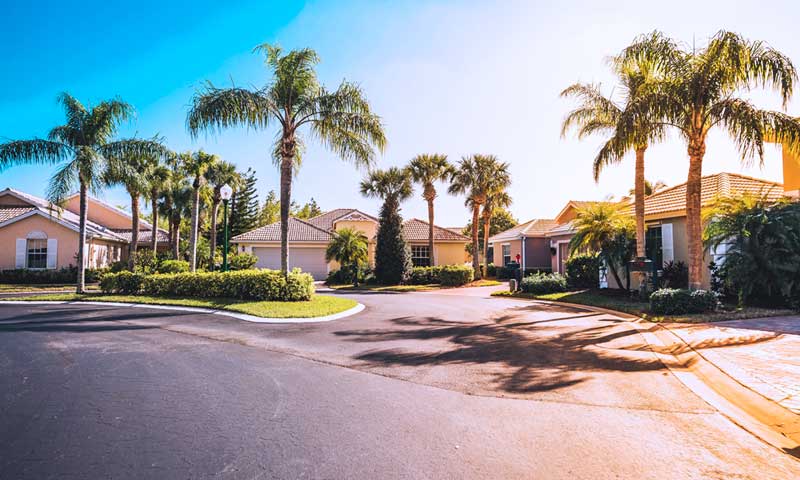BLOG
As the cranes involved in our last building boom disappear from our skyline, making way for the appreciation of new buildings resulting from settling construction activity, attention is drawn to past construction booms in our region. Decay resulting from the element of time — exacerbated by our proximity to the salty ocean air — has proven to require attention to the structural maintenance of the buildings erected throughout the years in South Florida. Additionally, advances made in keeping building occupants safe result in the requirement to make electrical and life safety improvements to aging buildings. One of the tools implemented by local governments to ensure the safety of persons residing in multi-family condominium buildings is the 40-Year Recertification Process (the “40-Year Process”). This process requires many condo buildings in Miami-Dade and Broward counties to undergo a thorough assessment prior to being certified by local authorities as safe for occupancy. Unfortunately, the boards of directors of many community associations subject to this 40-Year Process are unaware of their obligation to comply with this requirement until they are provided with a notice of non-compliance from their local authority and are faced with the possibility of fines being assessed or confronted with the unexpected expenses related to the process.
 The 40-Year Process requires the recertification of all buildings in existence for 40 years or longer (except single-family residences, duplexes and certain minor structures). For buildings subject to the 40-year Process, a written report prepared by a professional engineer or architect registered in the State of Florida must be provided to the corresponding building official within 90 days of the initial Notice of Required Inspection. The report should certify that each building or structure is structurally and electrically safe, or has been made structurally and electrically safe for the specified use for continued occupancy. The report must comply with minimum inspection procedural guidelines as issued by the local government’s Board of Rules and Appeals. If the inspection reveals that repairs or modifications are found to be necessary, then such repairs or modifications shall be completed within 150 days from the date of the Notice of Required Inspection (in Broward, the timeframe is 180 days from the date of the Building Safety Inspection Report). Once such repairs or modifications are completed, then the building must be re-inspected for compliance and recertification. Following certification, the building will have to undergo the same inspection process every 10 years.
The 40-Year Process requires the recertification of all buildings in existence for 40 years or longer (except single-family residences, duplexes and certain minor structures). For buildings subject to the 40-year Process, a written report prepared by a professional engineer or architect registered in the State of Florida must be provided to the corresponding building official within 90 days of the initial Notice of Required Inspection. The report should certify that each building or structure is structurally and electrically safe, or has been made structurally and electrically safe for the specified use for continued occupancy. The report must comply with minimum inspection procedural guidelines as issued by the local government’s Board of Rules and Appeals. If the inspection reveals that repairs or modifications are found to be necessary, then such repairs or modifications shall be completed within 150 days from the date of the Notice of Required Inspection (in Broward, the timeframe is 180 days from the date of the Building Safety Inspection Report). Once such repairs or modifications are completed, then the building must be re-inspected for compliance and recertification. Following certification, the building will have to undergo the same inspection process every 10 years.  Failure to comply with the required process exposes community associations to fines that may be imposed by the governing authority, and these fines can result in liens recorded against the property. In some instances, buildings determined to be unsafe for occupancy may even be condemned, and the occupants may be forced to move out.
Failure to comply with the required process exposes community associations to fines that may be imposed by the governing authority, and these fines can result in liens recorded against the property. In some instances, buildings determined to be unsafe for occupancy may even be condemned, and the occupants may be forced to move out.
As with most matters, preparation for the 40-Year Process is the key. Implementation of a proper maintenance program of the buildings’ structural and electrical components will likely decrease the likelihood of a building having to undergo significant modifications or repairs to achieve compliance. Additionally, community association directors must work closely with management to ensure that they properly budget for the engineering/architectural fees to be incurred during the 40-Year Process and that they have a qualified professional timely engaged to ensure compliance with the strict deadlines related to the process. Further, strict adherence to the deadlines imposed by the governing authority is recommended to avoid the imposition of fines or violations.
Lastly, boards should consult with legal counsel in the event timely compliance should be unlikely or if the association is already in violation of the requirement. In many instances, experienced legal counsel may assist the community association board with obtaining extensions to deadlines related to the process, protection from possible fines which may be imposed due to anticipated non-compliance and the reduction of fines imposed for non-compliance.
While the 40-Year Process may be considered an inconvenience to some, with the proper planning it should be viewed as a mere tool to assist boards with a mechanism to ensure the proper maintenance of the property and the safety of the residents.

